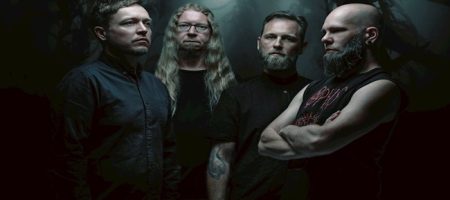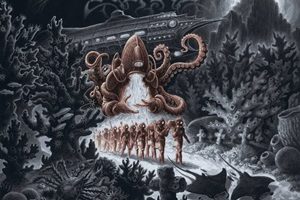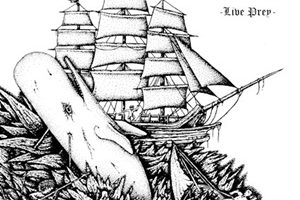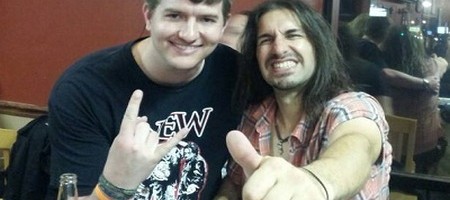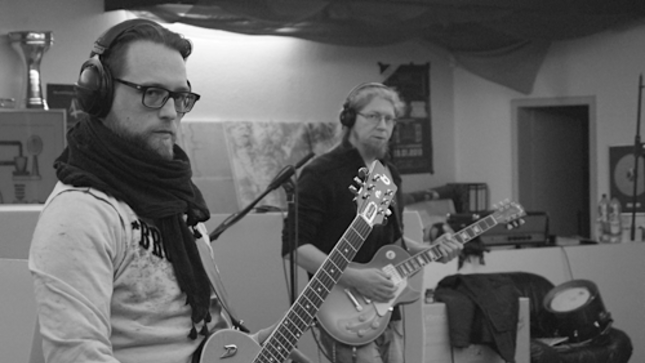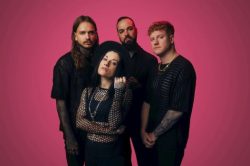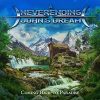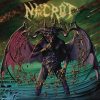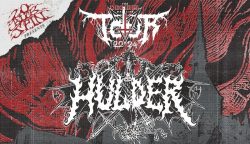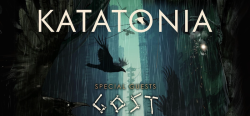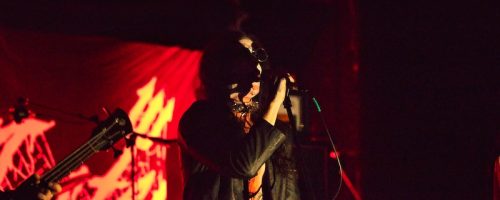Ahab – Nautical Authenticity
Monday, 31st August 2015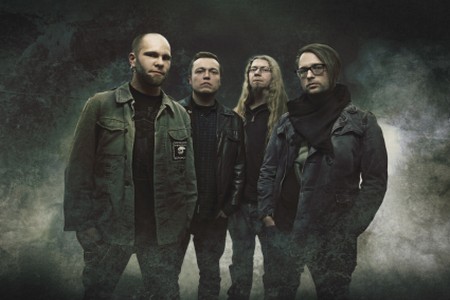
Nautik doom … themes relating to classic literature and the mysteries, suspense, and horrors that lurk beneath the depths of water are probably a new concept to most in the metal genre. Since 2004, German quartet Ahab have strived to float on their own ship, steering a course that includes the works of Herman Melville and Edgar Allen Poe to match up with their longer arrangements and doom metal style.
Their fourth studio album The Boats of the Glen Carrig gains its lyrical foothold from the book of the same name written by William Hope Hodgson, first published in 1907. Weird weed monsters and snail-like creatures appear to be the perfect word backdrop as Ahab become more dynamic and expansive in their thoughts and playing. After copious playbacks it was inevitable that seeking out guitarist/vocalist Daniel Droste to learn more about the band’s latest adventure would be necessary. Prepare to also learn more about how Ahab is more of a hobby act than a touring machine, the importance of being yourself, and admiration for everything from Anathema and Emperor to Napalm Death and Opeth comes up in this Skype talk.
Dead Rhetoric: Where did your fascination with the ocean come from – personal experience, reading fine literature, or a combination of both?
Daniel Droste: It was a combination of both. I have childhood memories when I was on holidays with my parents on the Baltic Sea- there were friends from my grandparents that had like a small house and we went there quite often so that was my first contact with the sea. Afterwards it was literature, seeing the Moby Dick movie as a child, it was screened quite often in Germany on Sundays. It’s always a special feeling to be on the sea and a fascinating topic- (guitarist) Chris (Hector) and I had this fascination together and it’s the reason why we founded Ahab together.
Dead Rhetoric: Do you happen to live currently near the sea in Germany?
Droste: Not at all, I happen to live near a river but I’m in the south and about a 7 or 8 hour drive away from the sea.
Dead Rhetoric: The Boats of the Glen Carrig is the fourth Ahab album, and seems to expand on the Nautik Funeral Doom style even more in the sense of some wider dynamics depending on the needs of each song. How did the songwriting and studio sessions go, any special challenges or obstacles that had to be overcome?
Droste: We experimented with the guitar sound a lot this time around. It was a hard piece of work, we spent many days with mixing the record to get the sound that we wanted (to hear). The composing process was kind of different- in the early days I would compose complete songs at home and taking riffs to the rehearsal room. We wrote 3 songs without having a guideline and we just had to kick them out. It didn’t work for us so we started over again when we had the novel in place.
These are the main differences – the songs were more like a jamming session and playing together as a band. We did the same with the recording process- we recorded together almost live, bass and drums were recorded simultaneously and the rhythm guitars were recorded together. It gave us this special feeling like a band playing together.
Dead Rhetoric: When it comes to the working in of the lyrics, do you that in tandem with the music because you are taking this from a piece of literature?
Droste: It’s different. We have our trademarks that we want to keep- guttural vocals, clean vocals, melodic guitar parts, these are the basics of our sound. Then I would say the music is guided by the story we are composing to. We have the structure of an Ahab sound in our minds, it’s formed by the literature we are working with. If it sounds like an Ahab song we keep it, and if it fits the story we work with it. With the lyrics, it wasn’t exactly like working with the final lyrics – we concentrated on the chapters. Chris wrote all the lyrics and there were certain chapters we focused on. The lyrics would be edited afterwards.
Dead Rhetoric: At what point did the idea of recording an Alan Parsons Project song come up? It’s definitely not a track most doom bands would touch…
Droste: Yeah, but that was our intention- to do a non-typical metal song, to do something different. The record label wanted to do this 7 inch single, and they needed 5 minutes on this record. We knew we couldn’t do a 5 minute song, so we decided to do a cover song. In my opinion you need to have a connection to the song to do it well. We wrote a big list with many candidates and there were songs that had this connection to the nautical theme, but in the end we concluded that this song would be the best because we all like this song. It really worked well, I wasn’t sure if it would be a good doom song, we did a rough version at home with half the speed of the original, and I recognized quite fast that it was working. We recorded it and we are really satisfied with it.
Dead Rhetoric: The cover is vibrant, almost psychedelic in terms of the sea creatures and colors. Who designed this and was it a collaborative process between the artist and the band to get things exactly the way you wanted?
Droste: The cover was painted by Sebastian Jerke who already had collaborated with us on The Giant record. We are always in contact when we are working together, and he’s always reading the book as we are composing before he starts painting his first sketches. He asked us what we wanted on the cover, and the scene is not really described in the book- it’s more of a view behind the scene. An area of the book where these creatures crawl out of a hole to a cave where they are living in. The cover is like the view from the cave to the outside, we imagine what it would be like inside. We developed this with Sebastian, he did a first sketch and then we added some things, changed some things, discussed the colors we wanted to use- a good collaboration.
Dead Rhetoric: How would you describe Ahab in a live setting? What makes for a special, memorable show in your eyes, and do you have a preference in terms of venues or size of audience?
Droste: It depends. We try to keep things as authentic as possible. We were asked by an interview guy a few years ago if we would be interested in wearing nautical uniforms on stage, but it’s not what we would want to do. We would rather be ourselves and authentic as possible. I wouldn’t say I have a preference between a smaller club versus a larger festival. The only thing I prefer in a club situation to a festival is you have more time to fix your sound on stage. When it comes to a festival you have 20-30 minutes to get your stuff on stage and get a small soundcheck going, then it all has to work. I enjoy both- being on stage with a big audience is a bit unreal, you are far away from the crowd but in a small club it’s a special atmosphere, closer and more private. I don’t want to miss either event.
Dead Rhetoric: Which record(s) in the band’s discography do you consider a breakthrough in terms of either personal growth or pinnacles in terms of audience acceptance?
Droste: That’s a difficult question. Many people consider our first album The Call of the Wretched Sea as our best and strongest album. I wouldn’t say it’s our strongest one but maybe it’s our most important one because it was our first step with Ahab into the music industry. I think there was kind of a breakthrough with The Giant because the sound changed a bit, many of the diehard fans remarked that it wasn’t funeral doom anymore. Although we only claim to play funeral doom on the first record, we still get that name for our sound. That album was a turning point, we don’t want to be a band that is playing the same all the time. I think it’s important to have bands like AC/DC that are playing rock n’ roll, but that’s not our cup of tea. We do the music for us and not the record company.
Pages: 1 2











